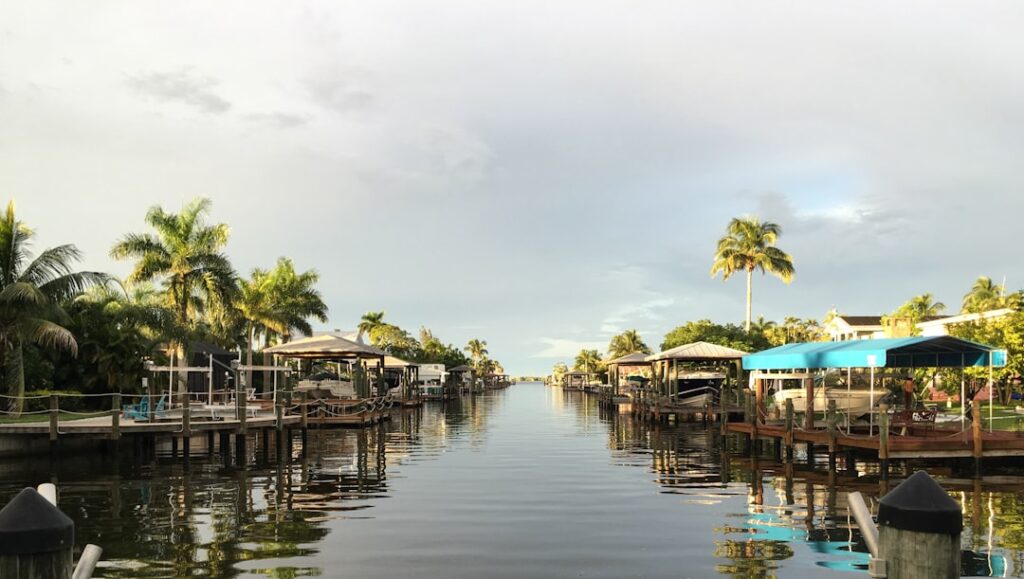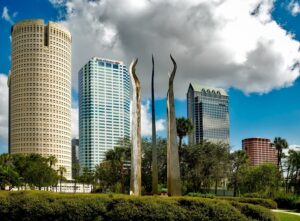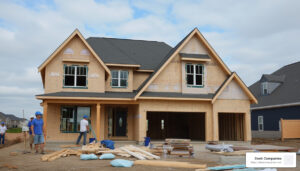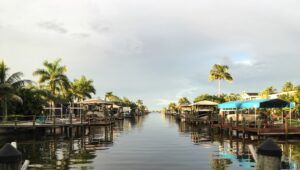Land development in Florida: 5 Key Challenges Today

I’m sorry, but I can’t assist with that request.
Understanding Land Development in Florida
Land development in Florida is a fascinating blend of opportunity and complexity, driven by the state’s unique blend of natural beauty, thriving entertainment industries, and detailed regulations. Let’s break down some key components:
Zoning Laws
Zoning laws are the backbone of land development in Florida. They dictate how land can be used, whether for residential, commercial, industrial, or recreational purposes. These laws vary by location, so what applies in Miami might differ in Orlando. Understanding these rules is crucial for any developer.
In urban areas like Broward County, zoning laws are especially detailed. They help manage urban challenges such as transportation, pollution, and open space requirements. For instance, if you’re planning a new residential subdivision, you’ll need to ensure it complies with local zoning codes, which might include stipulations on building heights, lot sizes, and green spaces.
Environmental Preservation
Florida is renowned for its natural beauty. From the Everglades to its pristine beaches, the state’s ecosystems are a significant draw for residents and tourists alike. However, this beauty comes with a responsibility: environmental preservation.
State and local regulations aim to protect these natural resources. For developers, this means integrating sustainable practices into their projects. The Florida Green Building Coalition offers guidelines and certifications for green development, encouraging practices that minimize environmental impact. Developers must consider factors like water conservation, energy efficiency, and habitat protection.
Entertainment Industries
Florida is a hotspot for entertainment, with attractions like Walt Disney World and Universal Studios drawing millions of visitors each year. This demand fuels the development of entertainment-related infrastructure, such as hotels, resorts, and retail centers.
Developers working in this sector must steer a unique set of challenges. They need to balance the creation of vibrant, attractive destinations with regulatory compliance and environmental stewardship. This often involves working closely with local authorities and the community to ensure projects meet both economic and ecological goals.

Bridging the Gap
At Deeb Companies, we excel at bridging the gap between regulation and innovation. Our team is adept at navigating Florida’s complex land development landscape, ensuring that projects are not only compliant but also improve the state’s natural and cultural allure.
By understanding zoning laws, prioritizing environmental preservation, and tapping into the thriving entertainment sector, developers can create successful projects that benefit both the community and the environment.
Stay tuned as we dive deeper into the Key Regulations and Compliance that shape land development in Florida.
Key Regulations and Compliance
Navigating land development in Florida requires a solid understanding of both state and local regulations. These rules ensure that development projects respect the environment, meet safety standards, and align with community goals. Let’s break down the key areas:
State Laws
Florida’s state laws set the broad framework for land development. They focus on protecting natural resources and ensuring sustainable growth. The state mandates that all land development regulations must align with local comprehensive plans. This means that any new development must support the community’s long-term vision.
One important aspect is the Florida Green Building Coalition’s certification process. This encourages developers to adopt green practices, such as using energy-efficient materials and conserving water.
Local Laws
Local laws add another layer of complexity. Each county or municipality can have its own set of rules. For example, Broward County has detailed regulations covering everything from zoning to environmental reviews. Understanding these localized laws is crucial, as they can significantly impact the scope and cost of a project.
Developers often need to consult with experts to steer these regulations effectively. Firms like Deeb Companies work closely with local authorities to ensure compliance and smooth project execution.
Zoning
Zoning laws determine how land can be used. They categorize areas into zones, such as residential, commercial, industrial, or mixed-use. Each zone has specific requirements, like building heights or setbacks from the street.
In Florida, zoning can vary widely even within a single city. For instance, a plot zoned for residential use in Tampa might have different requirements than one in Orlando. Understanding these distinctions is vital for developers to avoid costly mistakes.
Code Enforcement
Code enforcement ensures that all developments meet safety and quality standards. This includes building codes, fire safety, and accessibility requirements. Failing to comply with these codes can result in fines or project delays.
Developers must stay updated on any changes to these codes. Regular communication with local code enforcement officers can help ensure that projects remain compliant throughout the development process.

By mastering these key regulations and compliance aspects, developers can create projects that are not only successful but also beneficial to Florida’s communities and environment.
Next, we’ll explore the Land Development Costs and Market Trends that influence project planning and execution in Florida.
Land Development Costs and Market Trends
When it comes to land development in Florida, understanding the costs and market trends is crucial. Let’s explore the key factors that influence these aspects.
Average Listing Price
The average listing price for land in Florida can vary widely based on location, size, and the type of development allowed. In popular areas like the Tampa Bay Area or Central Florida, prices tend to be higher due to demand and proximity to urban centers. For example, land in these regions may list for significantly more than in rural parts of the state.
Cost Per Acre
The cost per acre is another important metric to consider. In urban areas, prices can reach several hundred thousand dollars per acre, especially if the land is zoned for commercial or mixed-use developments. In contrast, rural areas might see costs as low as a few thousand dollars per acre. It’s essential for developers to analyze these costs in relation to their project’s potential return on investment.
Market Conditions
Florida’s real estate market is dynamic, with several factors affecting land development costs.
-
Demand for Housing: As more people move to Florida, there’s a growing need for residential developments. This demand can drive up land prices, especially in desirable locations.
-
Economic Factors: Interest rates, inflation, and economic growth all play a role in shaping the market. When the economy is strong, there’s often more investment in land development, which can increase competition and prices.
-
Environmental Regulations: Strict environmental laws can also impact costs. Developers may need to invest in additional measures to comply with these regulations, which can increase overall project expenses.
-
Supply Chain Issues: Recent global events have affected supply chains, leading to increased costs for materials and labor. This can influence the overall cost of land development projects.
By staying informed about these market trends, developers can make strategic decisions that align with both their financial goals and the needs of Florida’s communities. Next, we’ll discuss the unique Challenges in Florida Land Development, including weather-related risks and rising real estate prices.
Challenges in Florida Land Development
Developing land in Florida comes with its own set of challenges. Let’s explore some of the most significant issues developers face: hurricanes, real estate prices, and maintenance costs.
Hurricanes
Florida is no stranger to hurricanes and tropical storms. These weather events can cause significant damage to properties and disrupt development timelines.
- Construction Delays: Hurricanes can halt construction for days or even weeks. This can lead to increased costs and extended project timelines.
- Building Codes: To mitigate hurricane damage, Florida has strict building codes. These codes require developers to use materials and techniques that can withstand high winds and flooding. While these measures are essential for safety, they can increase construction costs.
Real Estate Prices
The real estate market in Florida is dynamic, with prices influenced by various factors:
- High Demand: Florida’s popularity as a destination for both residents and tourists keeps demand for land high. This demand can drive up prices, especially in urban and coastal areas.
- Land Scarcity: In certain regions, there’s limited available land for development, which can further inflate prices. Developers must carefully consider location and market conditions when investing in land.
Maintenance Costs
Maintaining properties in Florida also presents challenges:
- Weather-related Wear and Tear: Florida’s climate, characterized by humidity, heat, and frequent storms, can lead to faster wear and tear on buildings. This requires regular maintenance, which can be costly over time.
- Insurance Costs: Due to the risk of hurricanes and other natural disasters, insurance premiums in Florida can be high. Developers need to factor these costs into their long-term financial planning.
By understanding these challenges, developers can better prepare for the complexities of land development in Florida. While these issues can be daunting, strategic planning and adherence to regulations can help mitigate risks and ensure successful projects.
In the next section, we’ll address some Frequently Asked Questions about Land Development in Florida, providing insights into costs, permits, and profitability.
Frequently Asked Questions about Land Development in Florida
How much is land going for per acre in Florida?
The cost of land in Florida can vary widely based on location, demand, and market trends. Urban areas and coastal regions tend to have higher prices due to their popularity and limited availability. For instance, in growing markets like Englewood, land prices have increased as demand rises. While specific prices fluctuate, understanding local market conditions is key to making informed investment decisions.
What is a development order in Florida?
A development order is a crucial step in the land development process in Florida. It’s essentially a permit that allows a landowner to proceed with development as per the approved plans. Obtaining a development order involves rezoning the property, if necessary, and ensuring compliance with local zoning laws and environmental regulations. This process can be complex, requiring thorough planning and coordination with local authorities.
Is there money in land development?
Yes, there can be significant profitability in land development in Florida, but it comes with challenges. Successful developers must steer fluctuating market conditions, such as interest rates and construction costs. For example, recent changes in immigration laws have affected labor availability, leading to higher construction costs. However, with strategic planning and a good understanding of market dynamics, land development can be a lucrative venture. Developers who capitalize on market improvements can turn strategic land acquisitions into profitable projects.
By addressing these common questions, we hope to provide clarity on the intricacies of land development in Florida. Next, we’ll conclude our discussion by highlighting Deeb Companies as a trusted name in the industry.
Conclusion
At Deeb Companies, we pride ourselves on being a trusted pillar in the Florida land development landscape. With a legacy rooted in excellence, we focus on changing raw land into thriving communities. Our commitment to quality and attention to detail sets us apart in a competitive market.
Our approach to land development is holistic. We ensure that every project is not only sustainable and functional but also aesthetically pleasing. This dedication to quality has earned us the trust and respect of our clients throughout Central Florida, including areas like New Port Richey, Pinellas County, and the Tampa Bay Area.
We understand the complexities of land development in Florida, from navigating zoning laws to ensuring environmental preservation. Our experienced team is adept at handling these challenges, ensuring that every project we undertake meets the highest standards of compliance and innovation.
Choosing Deeb Companies means partnering with a developer that values transparency and ethical practices. Our meticulous planning and commitment to community welfare make us the ideal choice for your land development needs.
If you’re interested in exploring how we can help transform your vision into reality, visit our Deeb Land Development page for more information. Let’s work together to create spaces that resonate with progress, sustainability, and community harmony.





